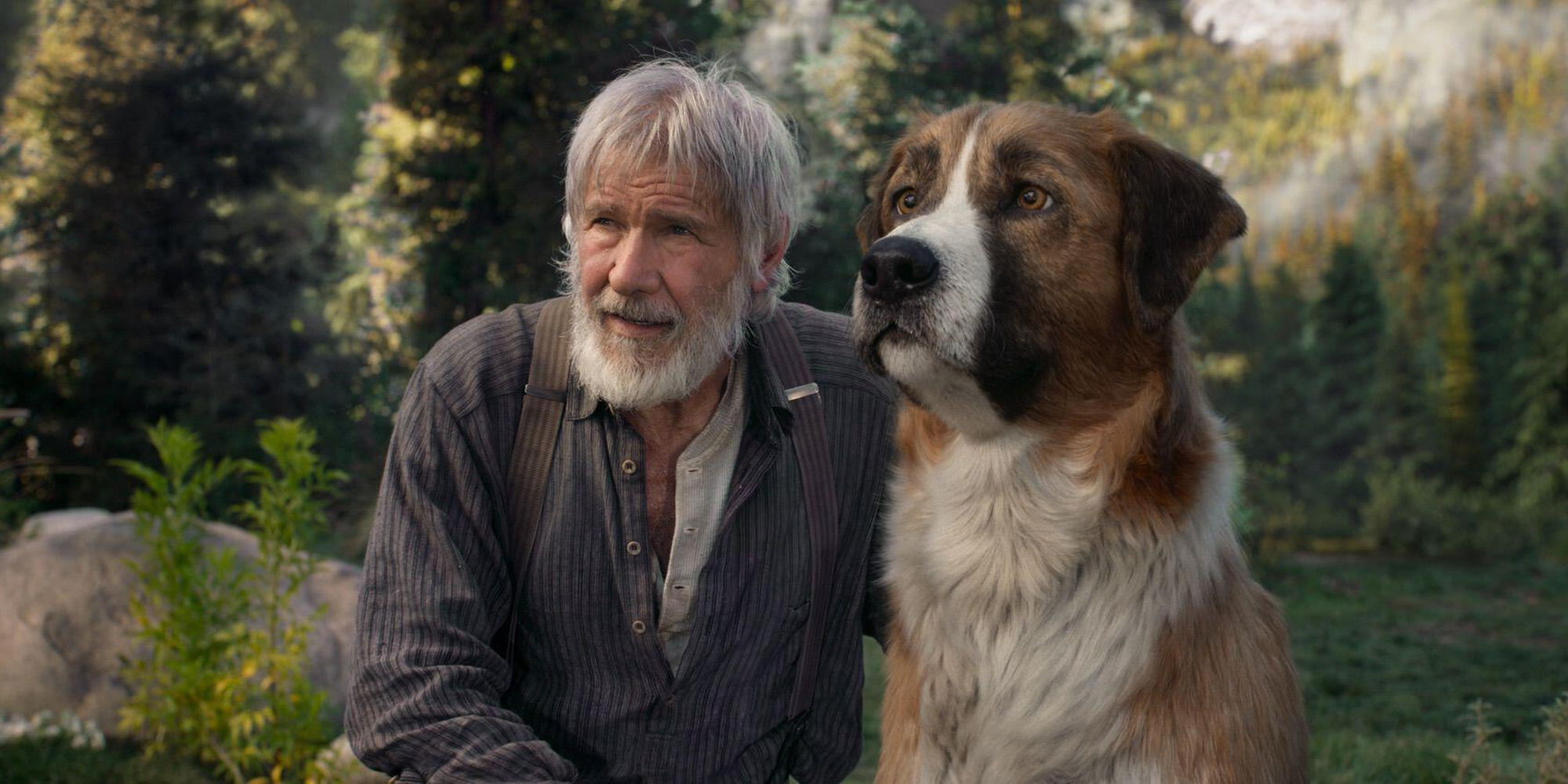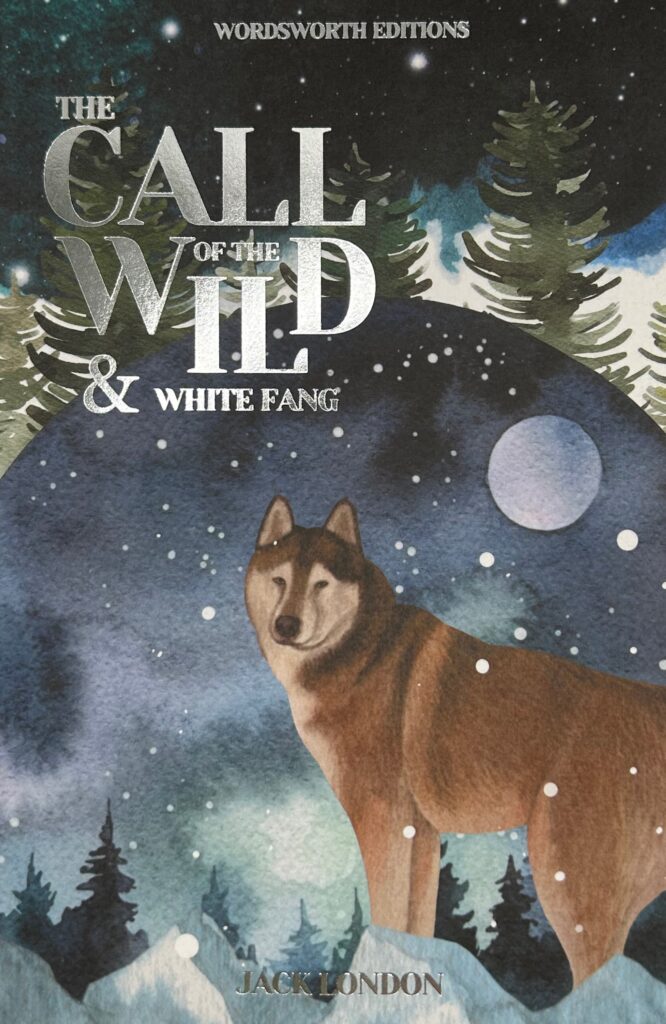
David Stuart Davies: The Call of the Wild
With the release of a new film adaptation, David Stuart Davies looks at this ever-popular classic.
There must be a famous adage somewhere that states that eventually all great novels will be scooped up by film-makers and brought to the screen. Some books, like Little Women, for example, are scooped up more than once, too often perhaps in some cases. Now it is true that Jack London’s The Call of the Wild, which is about to hit the cinema screens, has been filmed several times before but that is due to the unusual and fascinating nature of the tale. The most striking aspect of the book is that the main character is a dog. This is Buck, half St. Bernard and half Scot’s Collie. It is he, rather than his owner, John Thornton, we care about most as we observe the dog’s transition from a clumsy pampered pet to a ferocious feral hound in the Klondike, the leader of a pack of wolves. And London’s brilliant storytelling skills ensure we are empathising with him all the way.
We first discover Buck as the spoiled domestic pet of a California judge who dotes on the hound but then he is stolen and passes through a sequence of owners with whom London is able to illustrate the highs and lows of humanity. Eventually, Buck is sold to be a sledge dog in Alaska and eventually becomes the property of John Thornton who treats him kindly and trains Buck to deal with his new tough environment. During this process, a remarkable strong bond develops between the master and his hound.
Buck reacts to the savagery of the environment becoming progressively feral and is forced to dominate other dogs in order to survive. By the end he sheds the veneer of his civilised past and relies on primordial instinct and newly learned experience, emerging as a leader in the wild and eventually finding his true place in the world. It is a route, London seems to suggest, that humans also have to take in order to survive.
Through the narrative, London (1876 -1916) is able to explore the nature of the relationship between humans, animals and their environment. In this way, the author is able to express his belief that humanity is always in a state of conflict, and that the struggles of existence strengthen man’s nature and character. Though The Call of the Wild has often been classified as a children’s book, its themes and overarching narrative will easily absorb the mature reader.
The main setting for the novel is the Yukon in Canada during the Klondike gold rush of the 1890s. At the age of twenty-one, Jack London travelled there with his brother-in-law in the hope of striking it rich. He spent almost a year in this harsh part of the world and the book resonates with the atmosphere, the bleak unyielding landscape and the tough way of life that London captures in rich prose. However, London’s time in the Yukon was detrimental to his health. As with many men in the goldfields, he was undernourished; this led him to contract scurvy and developed a constant gnawing pain, which affected his hip and leg muscles. The struggles and ailments he suffered during his time in the Klondike led him to rely heavily on alcohol and drugs, all of which contributed to the author’s early death at the age of forty-one. Despite his short life, London was a prolific writer, having written over fifty books in twenty years as well as numerous short stories, essays, plays and poetry.
The Call of the Wild was first serialised in the Saturday Evening Post in the summer of 1903. It was an instant success and London achieved overnight fame. He received $2,500 for the rights of the novel, which was published by Macmillan. The respected critic H L Menken wrote of the book: ‘No popular writer of his time did any better writing than you will find in Call of the Wild… Here, indeed, are all the elements of sound fiction: clear thinking, a sense of character, the dramatic instinct, and above all, the adept putting together of words – words charming and slyly arranged, in a French phrase, for the respiration of the ear.’
Now if that quote doesn’t send you rushing off the grab a copy of this magnificent book, I don’t know what will!
The success of The Call of the Wild led London to pen a kind of sequel. In 1904 he wrote to Macmillan proposing a second book, White Fang, in which he wanted to present a reverse version of Buck – a dog who transforms from wild to tame: ‘I’m going to reverse the process… Instead of devolution of de civilization… I’m going to give the evolution, the civilisation of the dog.’ It’s good to see that both doggy tales are paired in the Wordsworth edition.
The first adaptation of The Call of the Wild was a silent film made in 1923. The 1935 version was the first sound film to feature the story. It starred Clark Gable in the expanded role of John Thornton. The film omits many of the episodes from the novel, concentrating instead on the romantic involvement of Thornton with a young woman who has been abandoned by her husband. The movie trundles to a syrupy happy ending. A grizzled Charlton Heston essayed the role of Thornton in a 1972 movie which was actually filmed in Finland and stayed close to the original text.
The new 2020 version of the novel is a mixture of live-action and computer animation, starring Harrison Ford as John Thornton and Terry Notary (an actor/movement coach who usually portrays animals in films such as The Adventures of Tin Tin and The Hobbit Trilogy) will ‘play’ Buck through motion capture. This adaptation is based on the 1932 movie which gave greater prominence to John Thornton than in the novel. This enables the star, Harrison Ford, to take a greater slice of the action than London allowed.
This high-profile movie proves that with Jack London’s Buck there is life in the old dog yet!
Image: © Twentieth Century Fox/Entertainment Pictures Contributor: Entertainment Pictures / Alamy Stock Photo
Books associated with this article
